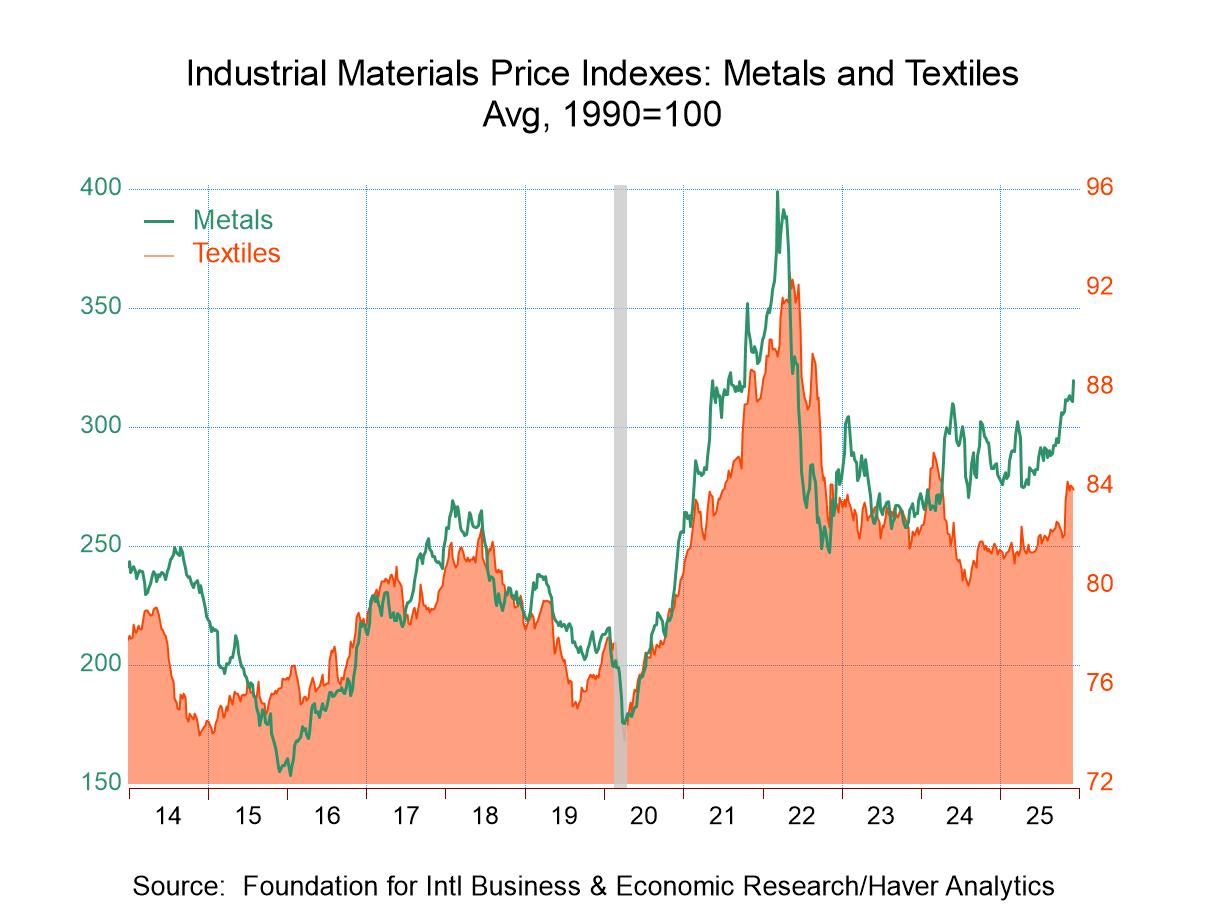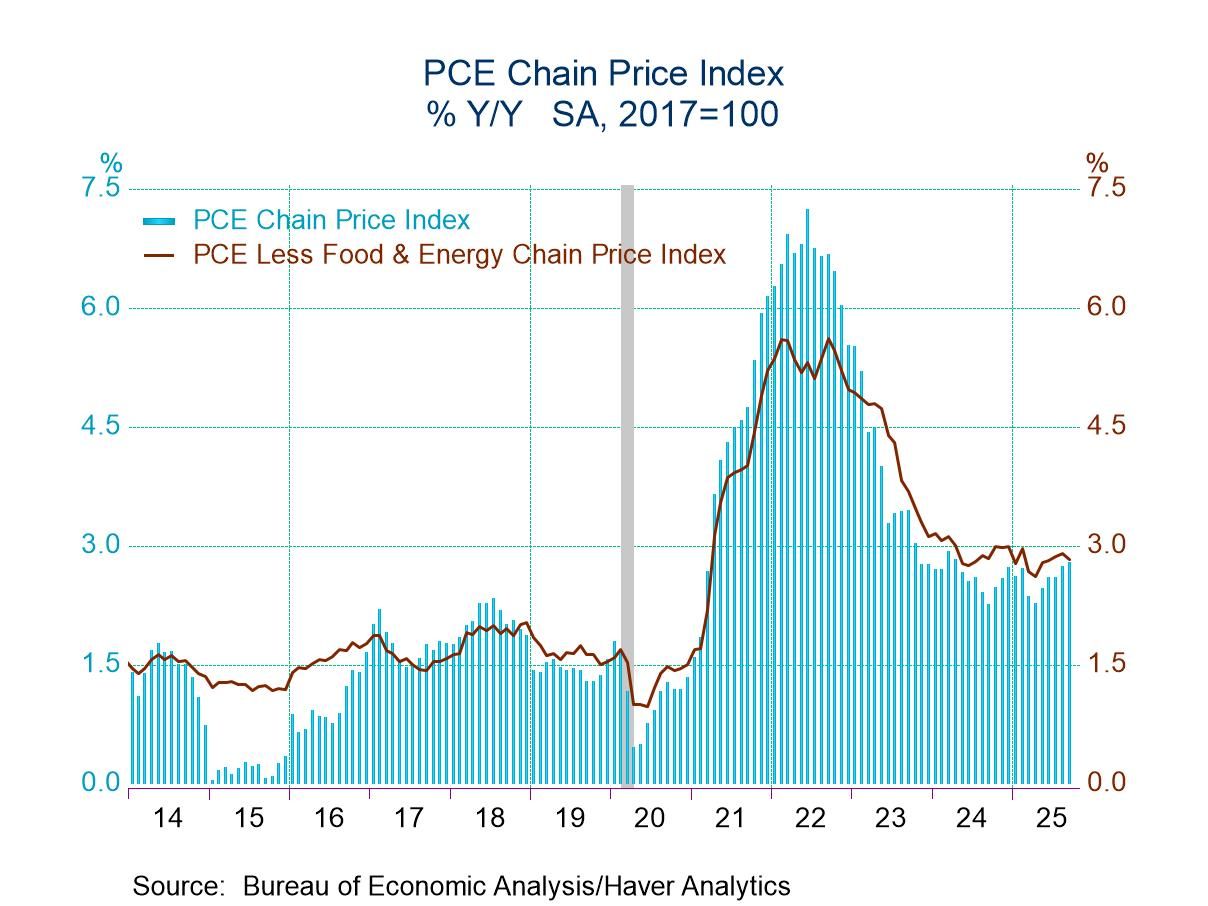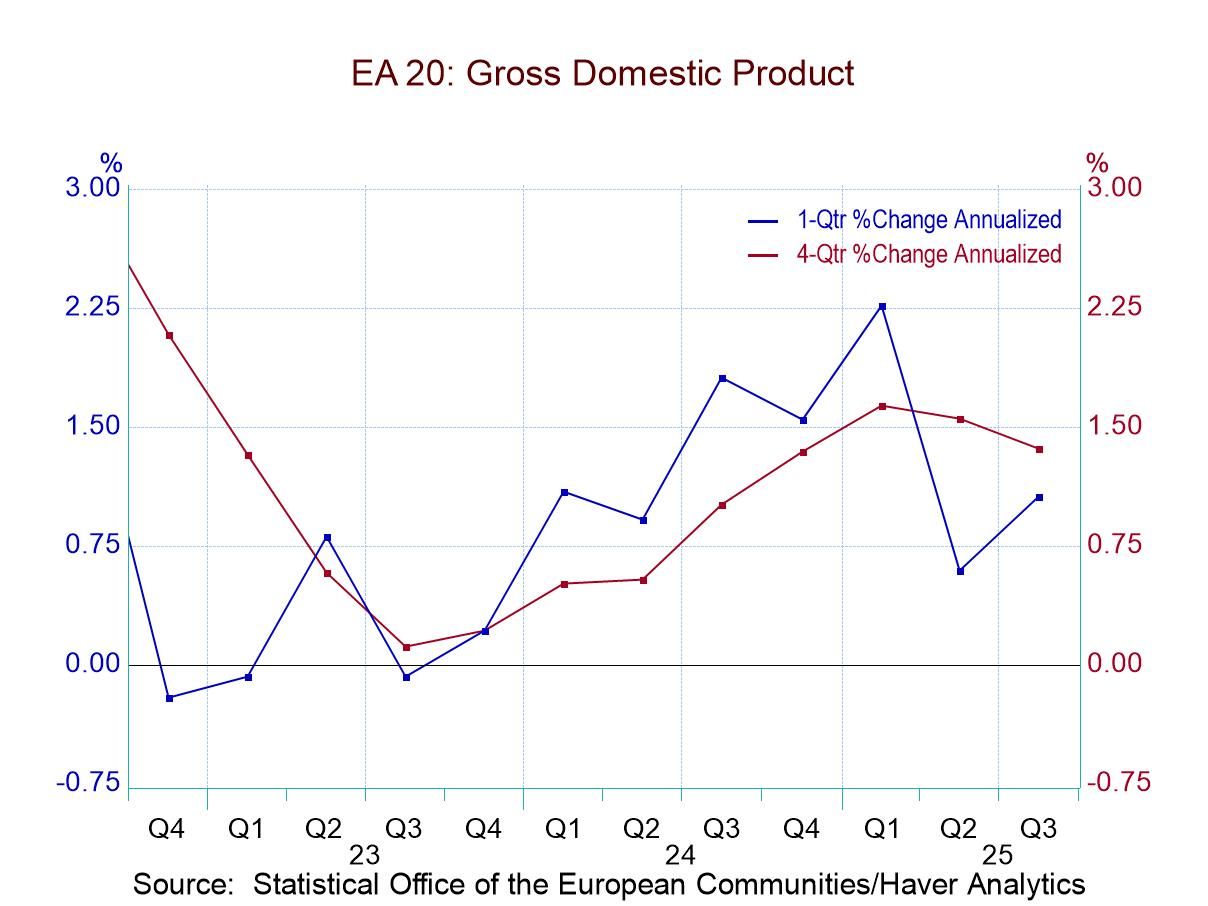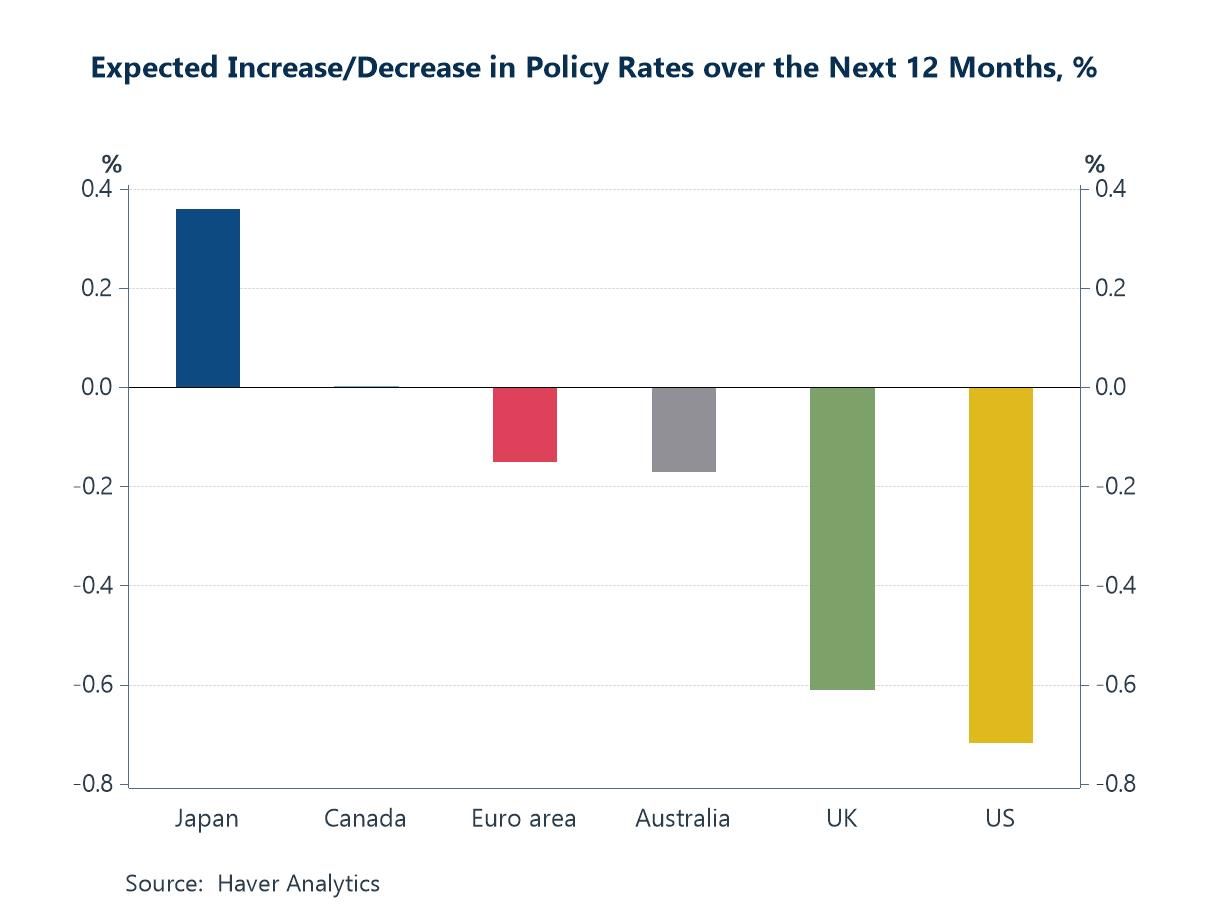 Global| Sep 24 2009
Global| Sep 24 2009U.S. Mass Layoffs Recover M/M And Are Up By Nearly One-Half From Last Year
by:Tom Moeller
|in:Economy in Brief
Summary
The U.S. Labor Department reports figures covering mass layoffs which involve at least 50 initial claimants from a single establishment filing during a consecutive 5-week period. They include short-term layoffs of 30 days or fewer. [...]
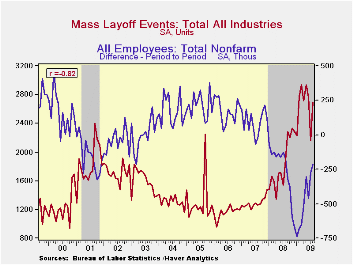 The U.S.
Labor Department reports figures covering mass layoffs which involve at
least 50 initial claimants from a single establishment filing during a
consecutive 5-week period. They include short-term layoffs of 30 days
or fewer. During August, these layoffs recouped most of their July
decline and were up by nearly one-half from the year earlier level. The
series is most relevant because during the last ten years there has
been a (negative) 82% correlation between layoffs and the m/m change in
payroll employment.
The U.S.
Labor Department reports figures covering mass layoffs which involve at
least 50 initial claimants from a single establishment filing during a
consecutive 5-week period. They include short-term layoffs of 30 days
or fewer. During August, these layoffs recouped most of their July
decline and were up by nearly one-half from the year earlier level. The
series is most relevant because during the last ten years there has
been a (negative) 82% correlation between layoffs and the m/m change in
payroll employment.
 Layoffs in
private industries were quite
significant last month and totaled 2,428, up 39.9% from last August.
The jump from July very much reflected 900 layoff events (SA) in the
factory sector. Though they were up significantly from last year they
have fallen sharply from their 2009 peak. Layoffs in the machinery,
transportation equipment, computer & electronics, electrical
equipment, furniture industries were notable.
Layoffs in
private industries were quite
significant last month and totaled 2,428, up 39.9% from last August.
The jump from July very much reflected 900 layoff events (SA) in the
factory sector. Though they were up significantly from last year they
have fallen sharply from their 2009 peak. Layoffs in the machinery,
transportation equipment, computer & electronics, electrical
equipment, furniture industries were notable.
Mass layoffs in the construction industry followed next and there were 160 of them. While down slightly from July, they remained up by 12.7% from last August after increases of roughly one-quarter during the prior two years. In the service sector mass layoffs have become fewer in number, as reflected in the monthly reports on nonfarm payrolls. Layoffs have fallen y/y in the retail trade, information, real estate, professional & technical and the arts & entertainment industries.
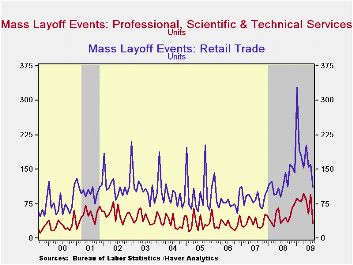 Meanwhile, layoffs by in the
government sector have risen by one-third
y/y led by a three-quarters increase in the Federal sector and an
increase of nearly one-half by state governments. Local governments
have increased layoffs by a lesser 18% y/y.
Meanwhile, layoffs by in the
government sector have risen by one-third
y/y led by a three-quarters increase in the Federal sector and an
increase of nearly one-half by state governments. Local governments
have increased layoffs by a lesser 18% y/y.
The Mass layoff data are available in Haver's SURVEYS database.
Federal Reserve Transparency is today's House testimony Scott G. Alvarez, General Counsel, and it is available here.
| Mass Layoff Events | August | July | August '09 | 2008 | 2007 | 2006 |
|---|---|---|---|---|---|---|
| Total, All Industries (SA) | 2,690 | 2,157 | 1,887 | 22,016 | 15,495 | 13,890 |
| Private Nonfarm | 2,428 | 1,928 | 1,735 | 20,258 | 14,115 | 12,478 |
| Manufacturing | 900 | 621 | 626 | 7,174 | 4,789 | 4,283 |
| Private Nonfarm (NSA) | 1,334 | 2,659 | 1,343 | 19,432 | 14,046 | 12,587 |
| Construction | 160 | 170 | 142 | 2,393 | 1,952 | 1,546 |
| Retail Trade | 111 | 161 | 142 | 1,457 | 1,048 | 991 |
| Information | 46 | 90 | 48 | 545 | 383 | 350 |
| Finance & Insurance | 47 | 84 | 45 | 552 | 510 | 310 |
| Real Estate, Rental & Leasing | 7 | 12 | 13 | 118 | 71 | -- |
| Professional & Technical Services | 32 | 95 | 45 | 564 | 420 | 352 |
| Health Care & Social Assistance | 31 | 101 | 35 | 580 | 450 | 415 |
| Arts, Entertainment & Recreation | 19 | 38 | 18 | 311 | 240 | 245 |
| Government | 72 | 302 | 54 | 1,007 | 779 | 760 |
Tom Moeller
AuthorMore in Author Profile »Prior to joining Haver Analytics in 2000, Mr. Moeller worked as the Economist at Chancellor Capital Management from 1985 to 1999. There, he developed comprehensive economic forecasts and interpreted economic data for equity and fixed income portfolio managers. Also at Chancellor, Mr. Moeller worked as an equity analyst and was responsible for researching and rating companies in the economically sensitive automobile and housing industries for investment in Chancellor’s equity portfolio. Prior to joining Chancellor, Mr. Moeller was an Economist at Citibank from 1979 to 1984. He also analyzed pricing behavior in the metals industry for the Council on Wage and Price Stability in Washington, D.C. In 1999, Mr. Moeller received the award for most accurate forecast from the Forecasters' Club of New York. From 1990 to 1992 he was President of the New York Association for Business Economists. Mr. Moeller earned an M.B.A. in Finance from Fordham University, where he graduated in 1987. He holds a Bachelor of Arts in Economics from George Washington University.



